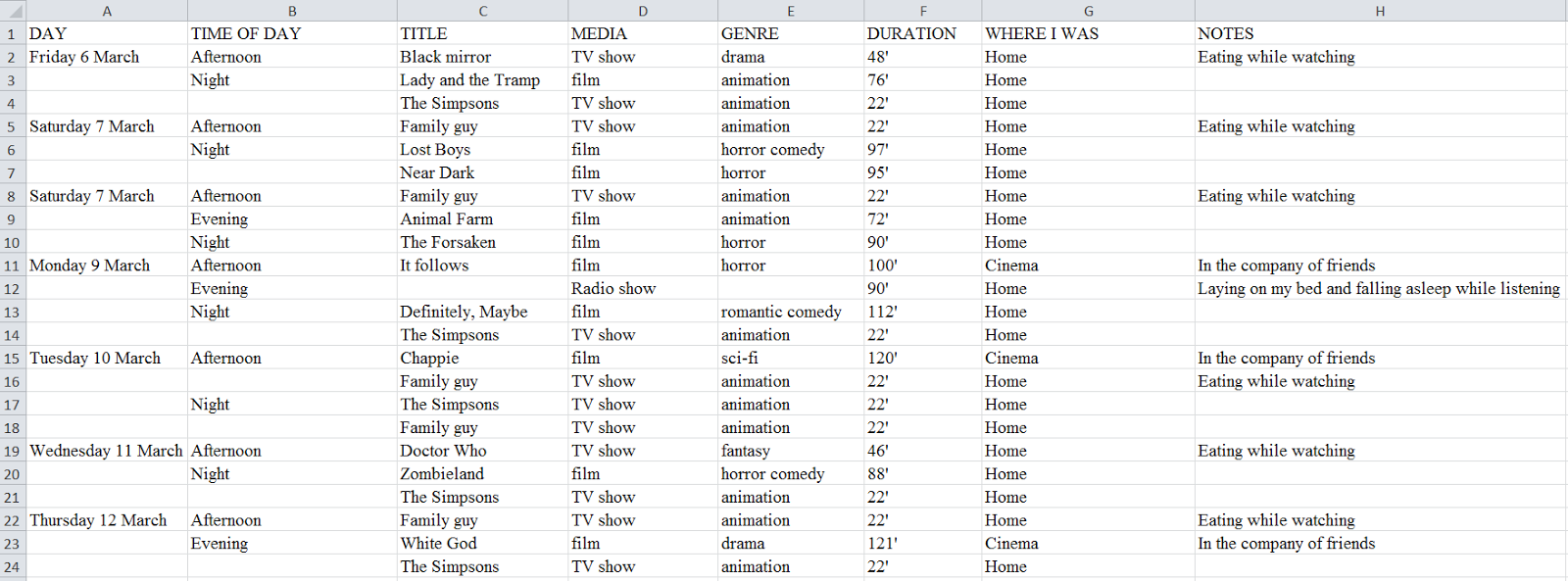This post
is my personal reflection on the entire experience of FMS Live, an enjoyable
unit based on cinema screenings and blogging. As I have already noted in my
media diary reflection, I deeply enjoy watching films and I find it intriguing
to be familiar enough with the art of film to be able to criticise and review
it. Therefore, I found FMS Live to be considerably useful to me.
Although I
would have preferred it if arthouse films -which are essential for a film
student- were an option too, I still think the screenings have been a valuable
opportunity. I therefore tried not to miss any of them, except for when I was
ill for a week. The screenings were either films that I really wanted to see
(like It follows and Kingsman: The Secret Service) or ones
that I would have never watched by myself (Furious
7, Unfriended) and I am glad for watching each and every one of them, as
they were all interesting in their own way.
In the
seminars, I did try to take as much part as possible in the discussions about
each film. I did comment on every film I saw, yet sometimes not being a fluent
English speaker made it hard for me to communicate my ideas as successfully as
I wanted to. Also, I did try to express my opinion in the facebook discussions
about the films, but I only felt comfortable doing it when I had in mind something
very specific and substantial to note.
Having a
blog has also been a very interesting part of the unit. I have been using blogs
for years, as I find them to be a very enjoyable way of communicating one’s
thoughts to a potential public. Noel’s first lecture on blogging was hence very
useful tο me. It provided
me with valuable information about other blogging platforms rather than
Blogger, which I have always been using, and about the way amateur bloggers
turn into professionals. It would have been interesting if I had used Wordpress
instead of Blogger for my FMS blog, however I decided this was not the right
moment for such experimentations, as what I wanted to focus on were the posts
themselves. I knew I would be writing exclusively about films, so I tried to
give the blog a relevant look using references to Inception (the spinning top) and Memento (the title). I also used Inception’s spinning top to demonstrate my rating for each film,
instead of the common stars, in an attempt to add something special to it.
The reason
I chose to focus my blog posts strictly on films and especially on reviews is
that film is perhaps the only form of media I am interested in writing about on
a professional level. I may have been writing reviews for a while now, but still, this
opportunity has been very useful to me. This is mainly because I had
never written any reviews in English, which turned out to be quite challenging.
Being used to communicating complicated thoughts about films in my mother tongue, I now had to adapt my way of thinking to the English language, with
which I am obviously not equally familiar. I therefore needed to either
simplify my thoughts or express them in a simpler way.
Hence, my
own professional goals have been reflected in the experience of FMS Live, which
has therefore been considerably valuable to me.









.png)



.jpg)










